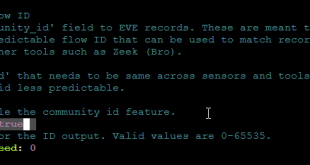Ver temperatura CPU en Centos 7
Os vamos a explicar como saber la temperatura del procesador o CPU mediante comandos linux en la distribución Centos 7.
yum install lm_sensors
Lo primero lanzaremos la detección:
[root@centos ~]# sensors-detect
# sensors-detect revision 3.4.0-6 (2016-06-01)
# System: HP ProLiant MicroServer Gen8
# Kernel: 3.10.0-957.21.3.el7.x86_64 x86_64
# Processor: Intel(R) Celeron(R) CPU G1610T @ 2.30GHz (6/58/9)
This program will help you determine which kernel modules you need
to load to use lm_sensors most effectively. It is generally safe
and recommended to accept the default answers to all questions,
unless you know what you're doing.
Some south bridges, CPUs or memory controllers contain embedded sensors.
Do you want to scan for them? This is totally safe. (YES/no): YES
Silicon Integrated Systems SIS5595... No
VIA VT82C686 Integrated Sensors... No
VIA VT8231 Integrated Sensors... No
AMD K8 thermal sensors... No
AMD Family 10h thermal sensors... No
AMD Family 11h thermal sensors... No
AMD Family 12h and 14h thermal sensors... No
AMD Family 15h thermal sensors... No
AMD Family 16h thermal sensors... No
AMD Family 17h thermal sensors... No
AMD Family 15h power sensors... No
AMD Family 16h power sensors... No
Intel digital thermal sensor... Success!
(driver coretemp')
Intel AMB FB-DIMM thermal sensor... No
Intel 5500/5520/X58 thermal sensor... No
VIA C7 thermal sensor... No
VIA Nano thermal sensor... No
Some Super I/O chips contain embedded sensors. We have to write toNational Semiconductor/ITE'... Yes
standard I/O ports to probe them. This is usually safe.
Do you want to scan for Super I/O sensors? (YES/no): YES
Probing for Super-I/O at 0x2e/0x2f
Trying family
Found unknown chip with ID 0x0001
Probing for Super-I/O at 0x4e/0x4f
Trying family National Semiconductor/ITE'... NoSMSC'... No
Trying family
Trying family VIA/Winbond/Nuvoton/Fintek'... NoITE'... No
Trying family
Some systems (mainly servers) implement IPMI, a set of common interfaces
through which system health data may be retrieved, amongst other things.
We first try to get the information from SMBIOS. If we don't find it
there, we have to read from arbitrary I/O ports to probe for such
interfaces. This is normally safe. Do you want to scan for IPMI
interfaces? (YES/no): YES
Found IPMI BMC KCS' at 0xca2... Success!to-be-written')
(confidence 8, driver
Some hardware monitoring chips are accessible through the ISA I/O ports.
We have to write to arbitrary I/O ports to probe them. This is usually
safe though. Yes, you do have ISA I/O ports even if you do not have any
ISA slots! Do you want to scan the ISA I/O ports? (YES/no): YES
Probing for National Semiconductor LM78' at 0x290... NoNational Semiconductor LM79' at 0x290... No
Probing for
Probing for Winbond W83781D' at 0x290... NoWinbond W83782D' at 0x290... No
Probing for
Lastly, we can probe the I2C/SMBus adapters for connected hardware
monitoring devices. This is the most risky part, and while it works
reasonably well on most systems, it has been reported to cause trouble
on some systems.
Do you want to probe the I2C/SMBus adapters now? (YES/no): YES
Sorry, no supported PCI bus adapters found.
Module i2c-dev loaded successfully.
Next adapter: mga i2c (i2c-0)
Do you want to scan it? (yes/NO/selectively): NO
Now follows a summary of the probes I have just done.
Just press ENTER to continue:
Driver to-be-written':IPMI BMC KCS' (confidence: 8)
* ISA bus, address 0xca2
Chip
Driver coretemp':Intel digital thermal sensor' (confidence: 9)
* Chip
Note: there is no driver for IPMI BMC KCS yet.
Check http://www.lm-sensors.org/wiki/Devices for updates.
Do you want to overwrite /etc/sysconfig/lm_sensors? (YES/no):
Unloading i2c-dev... OK
Ahora lanzaríamos el comando y tendríamos los resultados:
Si queréis verlo en tiempo real:
[root@centos ~]# watch sensors
Every 2,0s: sensors Thu Jul 11 23:17:53 2019
acpitz-virtual-0
Adapter: Virtual device
temp1: +8.3°C (crit = +31.3°C)
power_meter-acpi-0
Adapter: ACPI interface
power1: 0.00 W (interval = 300.00 s)
coretemp-isa-0000
Adapter: ISA adapter
Physical id 0: +36.0°C (high = +87.0°C, crit = +91.0°C)
Core 0: +34.0°C (high = +87.0°C, crit = +91.0°C)
Core 1: +36.0°C (high = +87.0°C, crit = +91.0°C)
tg3-pci-0300
Adapter: PCI adapter
temp1: +62.0°C (high = +100.0°C, crit = +110.0°C)
tg3-pci-0301
Adapter: PCI adapter
temp1: +62.0°C (high = +100.0°C, crit = +110.0°C)
¿Te ha gustado la entrada SÍGUENOS EN TWITTER?
¿Te ha gustado la entrada SÍGUENOS EN TWITTER O INVITANOS A UN CAFE?
 Blog Virtualizacion Tu Blog de Virtualización en Español. Maquinas Virtuales (El Blog de Negu) en castellano. Blog informática vExpert Raul Unzue
Blog Virtualizacion Tu Blog de Virtualización en Español. Maquinas Virtuales (El Blog de Negu) en castellano. Blog informática vExpert Raul Unzue







